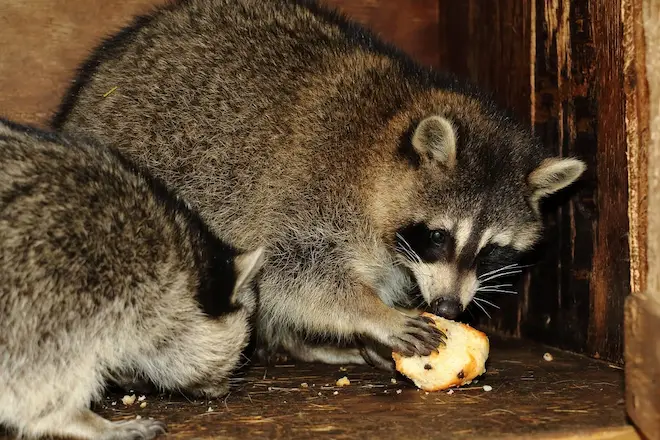If you suspect there is a raccoon in your attic, it’s probably a female with her babies. Before winter, female raccoons are always on the lookout for a warm place to nest. This usually happens during spring from March to May every year. The female raccoon normally gives birth to three to five babies. The baby raccoons are normally confined to one location for about six weeks after which they can move around. At this age, they are still too young to roam around, and the mother raccoon will keep them in your attic for around eight months.
What should you do if there is a raccoon in your attic?
It’s important to keep it in mind that when you notice raccoons in your attic, there is almost always baby raccoons with a female adult. Therefore, you need to be very careful. If you get rid of the adult female while the young are less than six weeks old, they could starve to death, rot and stink up your attic. It’s also very inhumane to get rid of a female nesting raccoons and leave behind its young. If you have to do the job without a professional (highly unrecommended) ensure that you have thoroughly searched through your attic. You can start by looking through areas that have heavy droppings and trails. Also, be keen to listen to chattering, it might help locate the babies.
Why do raccoons nest in the attic?
Understanding why raccoons choose to nest in your attic will go a long way in helping you understand what they are feeling which is vital to locating them. Raccoons choose attics since it offers a secure location with limited disturbance. In case a male raccoon locates the nest and isn’t the father of the babies, he could kill the young raccoons. Due to this fact, getting a secure place is important for a nursing female. They also choose to nest in your attic to protect their young from extreme weather mostly during winter.
Can I trap raccoons in my attic?
Unfortunately, trapping raccoons in your attic is not an option. The disadvantage of having baby raccoons in your attic is that you can not trap and get rid of them the same way you would with adult raccoons. Trapping is only effective with animals that are mature and can move around. It is also advisable not to trap baby raccoons since they could get hurt by the traps. Trapping raccoons in your attic will only get you the adult leaving the young raccoons to starve and die. Due to this reason, you might need a combination of technics.
How will I know if I have baby raccoons in my attic?
The only way you can be sure you have baby raccoons in your attic is if you can hear them. It is a safe assumption that they will be there since more than half the times an adult raccoon is up an attic it is a nesting female. You could also confirm if you have baby raccoons in your attic by checking on the mother’s nipples (needs a keen eye), in case they are protruding, you might have baby raccoons.
Locating the nest
The first thing you need to do when you notice a nursing female raccoon in your attic is to locate the nest. If you are unable to get to the nest at first glance, you might have to wait until nighttime and let their sounds guide you. Checking for raccoon droppings is another method that could lead you to the nest. Nests are not easy to locate. They are tucked away inside the walls or at the eaves of your ceiling.
Get professional help
Getting rid of raccoons in your attic isn’t a simple task, it requires patience, skill, and the right mix of removal methods. That is why this job is best left for professionals. The adult raccoon will become aggressive at the sight of intrusion trying to protect her babies. Remember, raccoon bites could be deadly, professionals like Raccoon Removal Pickering have the skills and know-how to detect the warnings.

